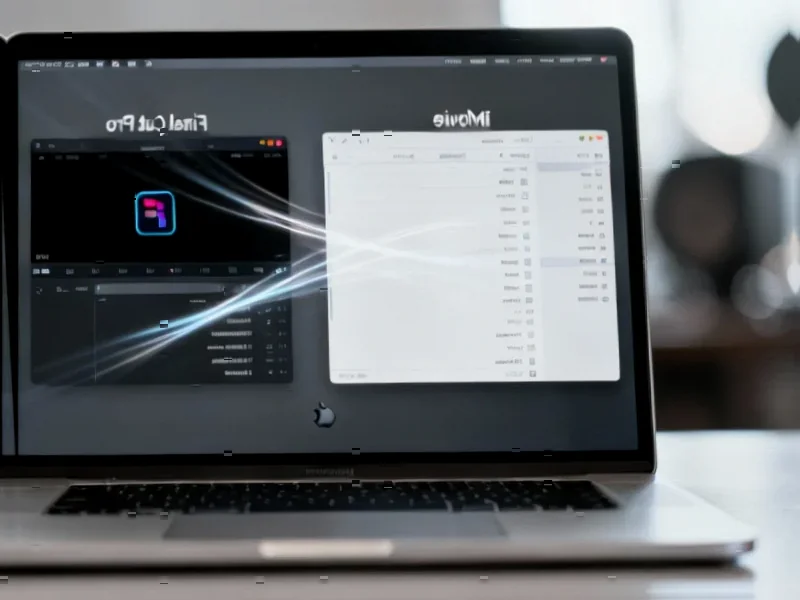According to AppleInsider, Apple unveiled a new Apple TV bumper on Monday as part of its ongoing rebrand, featuring a minimalist theme composed by FINNEAS, Billie Eilish’s brother and ten-time Grammy winner. The video will precede every Apple TV production, with three distinct versions: a five-second version for regular programming, a one-second version for trailers, and a twelve-second version exclusive to movie theaters. The composer described it as a “mnemonic” comparable to classic sound marks like NBC’s chimes or HBO’s static, designed to serve as the “bite of ginger between rolls” during binge-watching sessions. This development comes after Apple removed the “plus” from Apple TV+ in October, creating three distinct Apple TV products: the set-top box, the app, and the streaming service.
The Psychology of Sonic Branding in Streaming
What Apple is implementing here represents a sophisticated evolution of audio branding principles for the streaming era. Traditional television had clear structural boundaries – commercial breaks, channel changes, and scheduled programming created natural segmentation. Streaming platforms eliminated these traditional markers, creating what media psychologists call “temporal disorientation” during binge sessions. The mnemonic serves as a cognitive reset, creating micro-moments of brand recognition that help viewers mentally compartmentalize content. This isn’t just branding; it’s a psychological tool that addresses the unique challenges of infinite-scroll media consumption where episodes blend into one continuous experience.
The Technical Architecture of Sound Marks
The creation of effective sound marks involves complex audio engineering considerations that most consumers never appreciate. According to the composer’s discussion with Variety, these brief audio signatures must work across wildly different playback systems – from smartphone speakers to home theater systems to cinema sound stages. The frequency spectrum must be carefully balanced to ensure recognizability even on low-quality devices, while avoiding harsh frequencies that could cause listener fatigue during repeated exposure. The three-length approach (1-second, 5-second, and 12-second versions) demonstrates sophisticated audio scalability, with each version maintaining the core melodic or rhythmic motif while adapting to different contextual requirements.
Strategic Implications for Apple’s Ecosystem
This move reveals Apple’s broader strategy to create sensory consistency across its ecosystem. Just as the Mac startup chime and iPhone keyboard clicks became auditory signatures of Apple’s hardware, this TV mnemonic extends that philosophy to content. In an increasingly fragmented streaming landscape where consumers struggle to remember which service hosts which shows, these audio cues create subconscious brand associations that reinforce content ownership. When you hear that sound before “Ted Lasso,” you’re not just starting an episode – you’re experiencing Apple. This approach mirrors how Netflix’s “ta-dum” sound has become inextricably linked with their original programming, creating what brand architects call “sonic real estate” in consumers’ minds.
The Coming Wave of Audio Identification
We’re likely seeing the beginning of a major trend in streaming audio branding. As platforms compete for attention in an oversaturated market, distinctive audio signatures will become increasingly valuable for content identification and platform differentiation. The technical challenge lies in creating sounds that are distinctive without being intrusive, memorable without being annoying upon repetition. Future developments might include adaptive audio branding that subtly varies based on content genre or viewer preferences, or even personalized mnemonics that incorporate elements from a user’s watch history. The success of Apple’s approach will likely influence whether other streaming services follow suit with their own sophisticated audio identification systems.
The Hidden Implementation Challenges
What Apple doesn’t discuss publicly are the technical implementation hurdles of deploying such a system globally. Ensuring consistent audio levels across thousands of pieces of content requires sophisticated normalization algorithms to prevent the “commercial louder than program” effect that plagued traditional television. There are also localization considerations – sounds that work well in Western markets might have different cultural connotations in Asia or the Middle East. The metadata architecture needed to automatically insert the correct version (theater vs. streaming vs. trailer) across Apple’s entire content library represents a significant backend engineering challenge that demonstrates Apple’s infrastructure maturity in content management and delivery systems.




